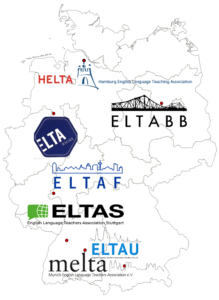 Written by: Rachel Tsateri
Written by: Rachel Tsateri
Did you attend the 2nd Inter-ELTA members’ day online event? It was a great opportunity for all Germany ELTAs members to meet, network and share ideas for best practices. There was a plenary talk by Ian McMaster, 3 PechaKuchas, and roundtable discussions, as well as hands-on workshops.
In this post, Tom Heaven and I are going to summarize the PechaKucha talks we gave at the event. At the end of the post, you’ll also find the link to an ELTA Rhine post where Slobodan Kelečević wrote about his presentation. For those who have never heard the term before, PechaKucha is a format in which speakers present 20 slides, with 20 seconds to talk about each one.
Tom’s PechaKucha: Breaking Out of the Online Blues – Running an International Exchange from Your Armchair.
I teach legal English at Potsdam University and for the past three semesters that’s meant online. Online teaching has its downsides; that’s undeniable. However, it also opens up opportunities; for example, programs such as Zoom or Big Blue Button allow far more participants to take part than a standard bricks and mortar classroom, and the participants don’t have to be in the same town, state or even continent. I talked about a class that I developed that tries to make the most of this. A Law Jaw session brings together two classes of students from different countries to talk about law-related and non law-related topics. Of course, the students needn’t be law students, but common interests help.

During the pandemic many of my students miss the chance to have conversations with new people in English due to restrictions on travel. Talking to students from other countries online gives students the chance to practise using English in an authentic situation in which they can also discuss topics related to their studies. They can also socialize and network in a low-pressure atmosphere and gain insights into one another’s legal systems and cultures.
Before the Online Meeting
The main focus of the exchange is the online meeting on Zoom, Big Blue Button or Skype, but the activity really begins beforehand.
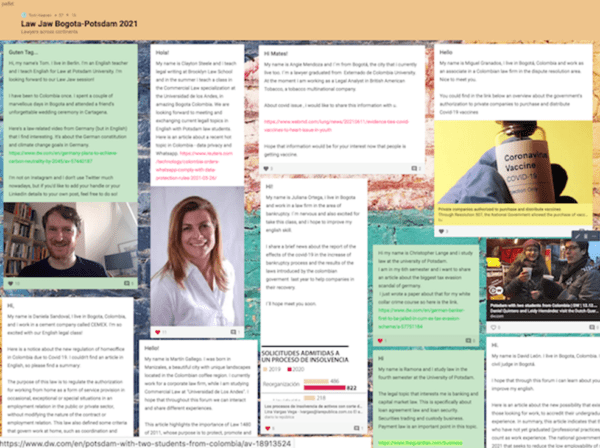
In the week before, students post profiles on a platform called Padlet. Padlet has the feel of a social media platform. It allows you to both post things yourself and comment on others’ posts. However, the platform is self-contained and doesn’t require an account. This helps to build a sense of community between the two groups before the actual meet up.
The Online Meeting
The core of the exchange takes place in the online meeting. Students join pre-assigned breakout rooms in which they have questions and topics to help them get to know their international counterparts and their legal systems.
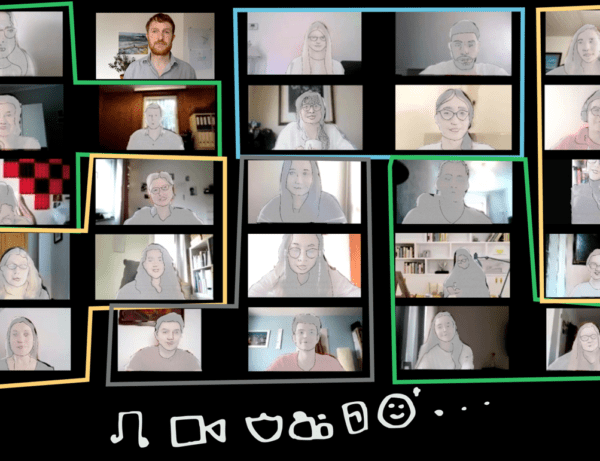
There are three twenty-minute long discussions in the break-out rooms, with different people and different sets of questions each time. For example:
1) Introduce yourselves. (5 mins)
2) Answer the question: What differences are there in legal education between your countries? (5 mins)
3) Tell your partner about a topic from class or a law-related topic that you find really interesting. (10 mins)
NB: This is just a guide. Students follow where the conversation takes them and go off script, which is fine.
I’ve run three Law Jaw classes: between Potsdam University and San Andes University in Bogota, between Potsdam and Melbourne Law School and between Potsdam and JSW, the only law school in Bhutan. So far in each session students have engaged with each other really well and I’ve received a lot of positive feedback. The following from one student is quite representative:
The best thing about it was… to realize that there are people all around the world that are doing the same studies as we do here. I mean obviously I know that there are law students all over the world, but it’s great to really get to know them.
Preparation
Preparation is really important.
- Think up discussion topics and tasks that will engage your students.
- Identify a means for students to make contact with each other before the session to build up a sense of community.
- Make sure that students can pass between breakout groups easily once the session has started.
If you get all of this right, the session will almost run itself. You can watch it unfold, providing assistance and taking notes for student feedback after the class. The students don’t stop talking!
Before and after the exchange you can develop classes that help students engage with their counterparts. For example:
- How to make small talk
- How to write a short personal profile
- How to discuss a specific technical or academic topic
What’s in it for the Teacher?
Apart from the positive feedback from students, I’ve found that the opportunity to collaborate with teachers I wouldn’t normally work with is hugely rewarding. Teaching, especially as a freelancer, can sometimes be a lonely profession.
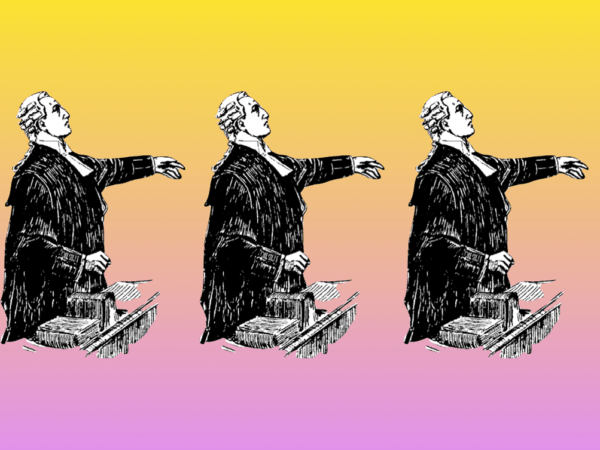
I got in touch with Chantal and the other teachers by attending a big online meeting organised by the Legal Writing Institute and talked about my idea with different teachers. Working with legal skills teachers has been really refreshing. They have different areas of expertise and ways of teaching that I could learn from.
Want help developing an online exchange session of your own? Drop me an email: or send me a message on LinkedIn
Rachel’s PechaKucha: What You Said, What You Should/Could Say
I shared an activity from the e-book Speaking Unplugged: 30 Activities for One-to-One Classes. The author calls it: What you Said, What you Should Say.
This is an activity that I use very often to focus both on target language (the language I am planning to teach) and emergent language (the language that comes up spontaneously in class).
I use the activity for two purposes:
- To correct errors
- To upgrade students’ language
How I use the activity.
- When correcting, I use the modal ‘should’.
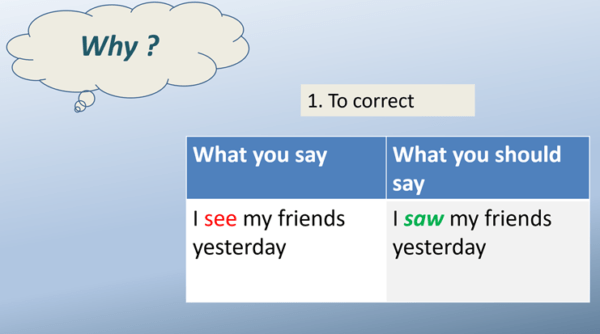
- When upgrading, which is when students say something that is not incorrect, but I can provide another way of expressing the same meaning, I use ‘could’.
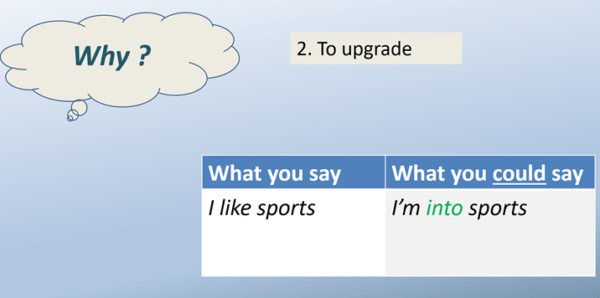
- I proposed three ways of running the activity

- Teacher-led version: the teacher records the language during the lesson and later gives feedback.
- Collaborative version: the teacher records the language but elicits correction from the class. In other words, the teacher asks students to spot the mistake or find alternative ways of expressing the same meaning.
- Student-led version: the students notice and record language they’d like to correct or upgrade at the end of class. In this case my table looks like this:
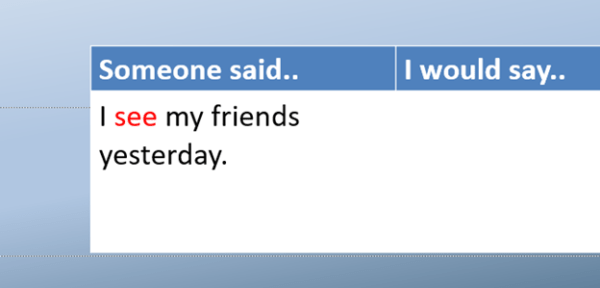
I also gave an example of how I used the activity in my DELTA LSA4, to teach modals of deduction and speculation. The steps were the following:
- Show students some photos from my younger days.
- Ask them what they think is happening, who the people are and where we are.
- Record language they are using to express certainty/uncertainty in the ‘what you say’ column. Students tend to avoid modals; they rely on maybe or I think to express uncertainty and the affirmative form to express certainty.
- Students read a text where they encounter the modals (must for certainty, might for uncertainty) followed by focus on MPF (meaning, pronunciation, form)
- Students go back to the table and transform their own sentences, using the modals, in the What you Could Say column.
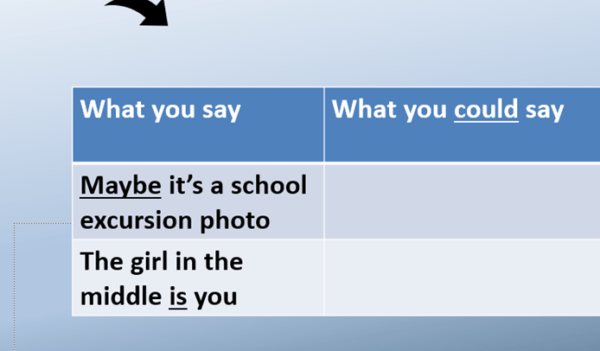
I have found this activity to be very useful, especially in Test-Teach-Test or Task-Based lessons. It really facilitates that transition from students’ previous knowledge to new knowledge.
The third PechaKucha was Slobodan Kelečević’s and the topic was TRR. Curious what this is? Read it here!


No Comments Yet